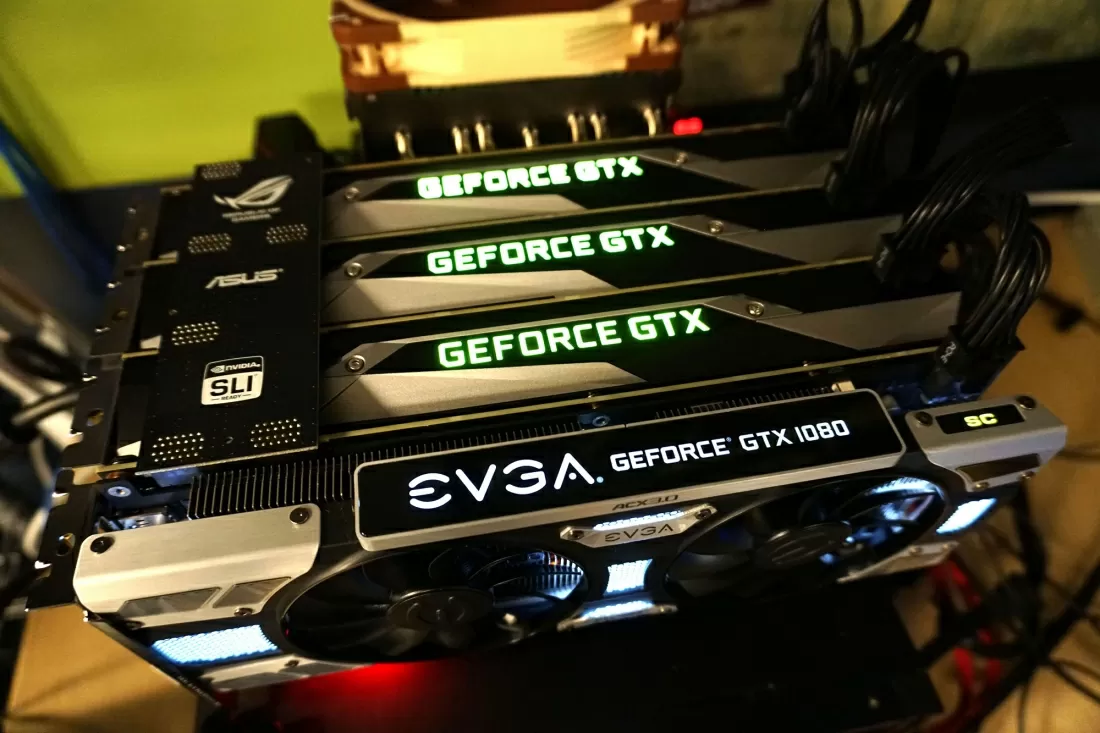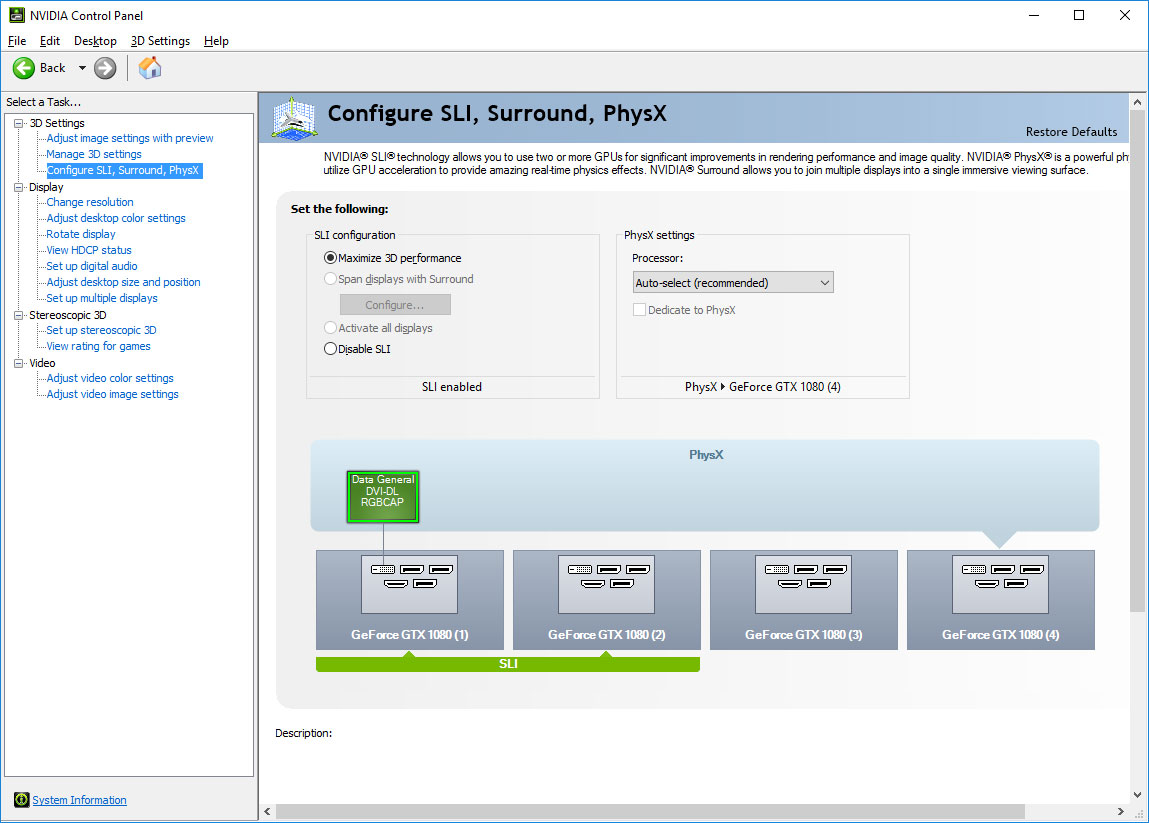
That ultra-insane gaming rig you’ve always dreamed of building won’t become a reality after all as Nvidia is no longer supporting three- and four-way SLI.
Ryan Shrout from PC Perspective recently got his hands on four of Nvidia’s new GeForce GTX 1080 cards with the intent of running some multi-card SLI benchmarks. If you’ve kept up with Nvidia lately, you already know that they’re taking a different approach with SLI on the 10-series cards.
Two-way SLI will work as it always has but those aiming to use three or four cards in tandem will need what Nvidia calls an Enthusiast Key. The website to download the app for the Enthusiast Key isn’t yet live and knowing that a key would be needed, Shrout reached out to Nvidia in hopes of getting access to the app for an article he was working on.
In their reply, Nvidia said it was backing away from the idea of an Enthusiast Key and would no longer require it for enabling. Instead, Nvidia is focusing its efforts on two-way SLI through its new SLI HB (high bandwidth) bridge which doubles the SLI bandwidth. As a result, Nvidia said it is focusing its efforts on two-way SLI only and will continue to include such SLI profiles in Game Ready drivers.

Nvidia added that DX12 and Nvidia VR Works SLI technology also allows developers to directly implement and control multi-GPU support within their games. Should a developer choose to use these technologies, their games won’t need SLI profiles. Furthermore, developers will still have the option to support more than two GPUs in their games although as the publication notes, only a few developers will probably go this route as it would certainly add additional development time to a game and thus, cost more money.
The only exception, Nvidia said, is for the overclocking community. Its Game Ready drivers will include three- and four-way SLI profiles for select benchmarking applications such as Fire Strike, Unigine and Catzilla. This, of course, will allow Nvidia’s name to remain high on the benchmarking charts.
All things considered, Nvidia’s decision to only focus on two-way SLI won’t have much of an impact on both the company and its users. The number of hardcore enthusiasts that run more than two graphics cards is no doubt very small not to mention the fact that multi-card setups don’t scale all that well.
All images courtesy PC Perspective
https://www.techspot.com/news/65164-nvidia-no-longer-support-three-four-way-sli.html